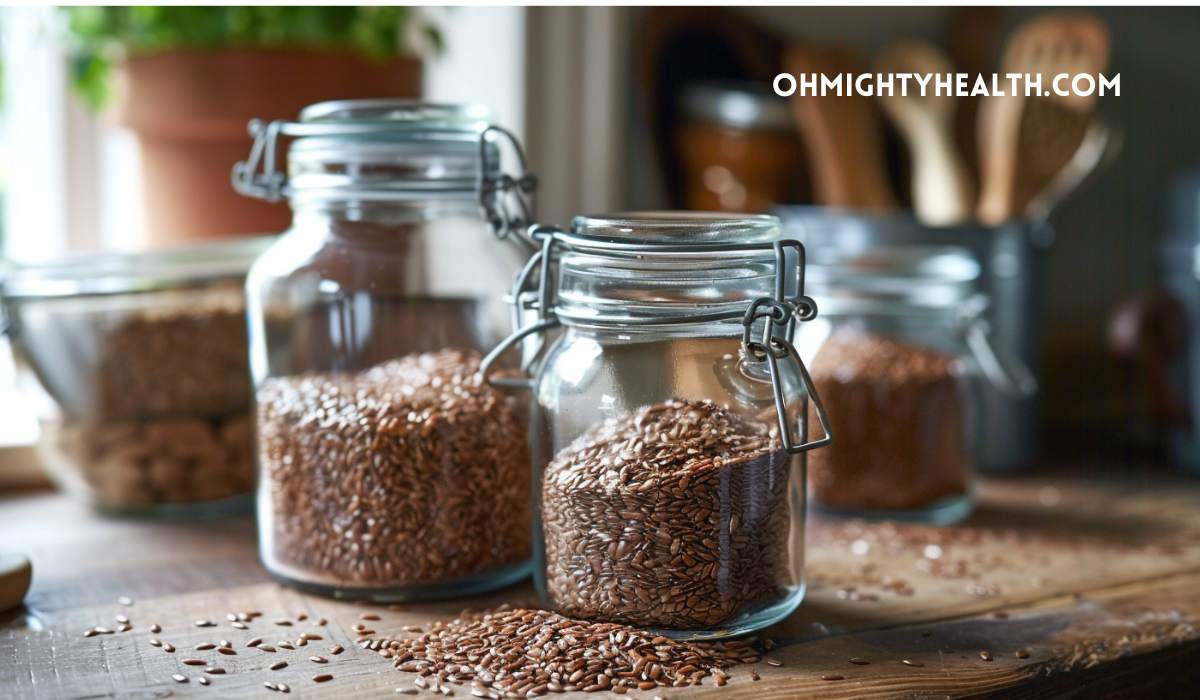Do Flax Seeds Go Bad? Your Guide to Keeping Them Fresh
If you are like me, you are using seeds every day.
I love flax seeds, and it’s easy to see why.
Flax seeds have soared in popularity thanks to their powerhouse of nutrients and the effortless way they elevate our meals in no time—just sprinkle on top of virtually anything, and… Voilà!
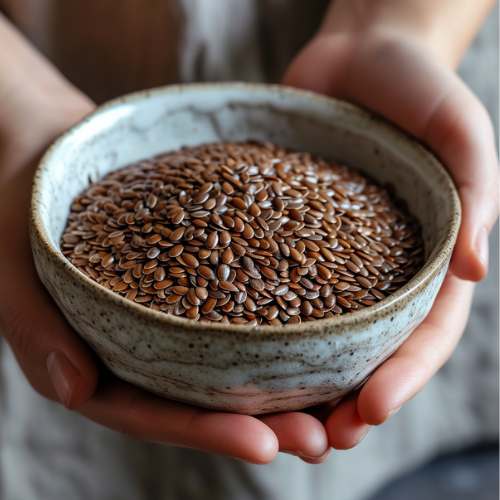
The problem is that flax seeds can go rancid because they’re rich in oils that are sensitive to heat, light, and air exposure.
These natural oils, especially the omega-3 fatty acids, start breaking down when exposed to these elements, leading to a loss of nutritional value and a bitter, unpleasant taste.
It’s this sensitivity that requires a bit of know-how and care to ensure your flax seeds stay fresh, nutritious, and ready to enhance your meals with their nutty goodness!
Let’s get into the nitty-gritty of flax seeds and whether they stand the test of time.
By the end of this article, you will know exactly what to do (and what not to do) to keep your flax seeds fresh and make the most of their health benefits.
From the best storage methods to identifying when they’ve gone past their prime, let’s look into keeping your flax seeds at their peak for every sprinkle, blend, and bake.
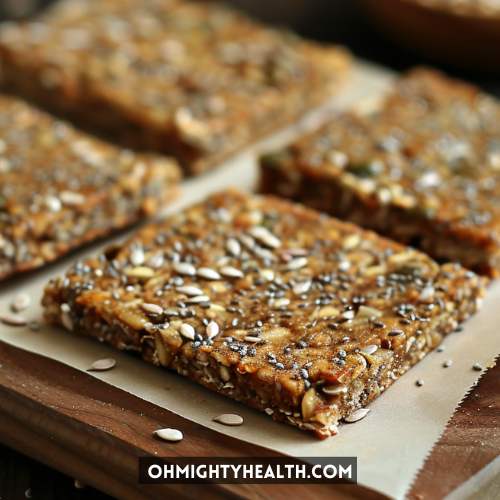
Flaxseed: do their superpowers expire?
Science has shown us that flax seeds are bursting with omega-3 fatty acids, fibre, iron, and antioxidants.
These tiny seeds are more than just food. They’re power-packed, giving you a whole bunch of health benefits. From supporting heart health to keeping our digestive systems running smoothly, flax seeds have claimed their spot as a must-have in the modern diet.
I keep both the golden and brown ones in my fridge or pantry, depending on the time of the year (pantry in the winter, fridge in the summer).
This little strategy of mine works for me, but even with the best of care, flax seeds, like all good things, have their limits.
So, what exactly makes them go bad?
What makes flax seeds go bad?
Flax seeds, like any natural product rich in oils, have enemies that can compromise their freshness and nutritional value.
Understanding these factors can help you extend their shelf life and enjoy their health benefits longer.
1. Whole flax seeds vs ground flax seeds
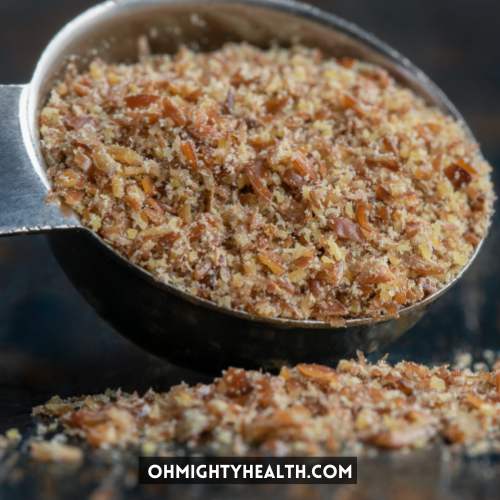
Whole flax seeds can last longer. Their protective outer shell acts like a mini fortress, preserving the essential nutrients inside while shielding them from spoilage factors.
Once you grind the whole seeds into ground flaxseed (known as “flax meal”), the clock starts ticking a bit faster. The ground flaxseed exposes more surface area to air, which can speed up the process of those rancid fats we’re trying to avoid. Check my article on the best ways to grind your flax seed.
2. Moisture (the enemy within)
Moisture is particularly problematic, as it can lead to mould growth, a concern especially relevant for ground flaxseed where mould is harder to detect.
Keeping your flax seeds dry is crucial.
3. Air exposure
Air can kickstart the oxidation process, leading to those unwanted rancid fats. Ground flaxseed is particularly vulnerable due to its increased surface area.
4. Time (inevitable factor)
Even with the best care, flaxseed won’t last forever. Over extended periods, even well-stored flaxseed’s fats may go rancid, and its nutrient profile may begin to degrade.
My tips for best shelf life
Once the protective barrier of the packaging is broken, flax seeds are more susceptible to spoilage. That simple.
So follow my tips below for optimal storage. They will ensure your flax seeds stay fresh and nutritious.
1. Transfer to airtight containers
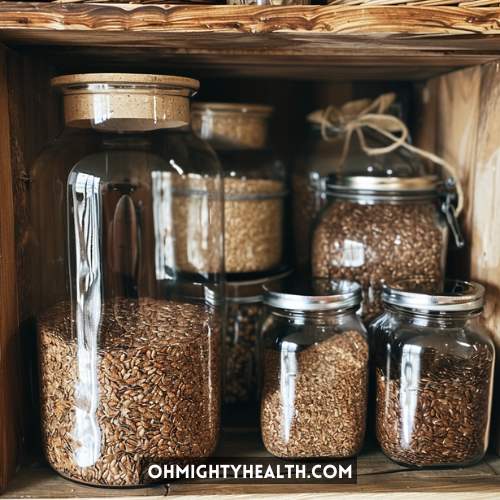
Immediately move flax seeds to airtight containers once their original packaging is opened so they are sealed tightly.
2. Keep in cool and dark places
Store your flax seeds in a cool, dark place. The pantry works well for short-term storage, but for longer shelf life, especially for ground flaxseed, consider the refrigerator or freezer.
3. Refrigerate or freeze for longevity
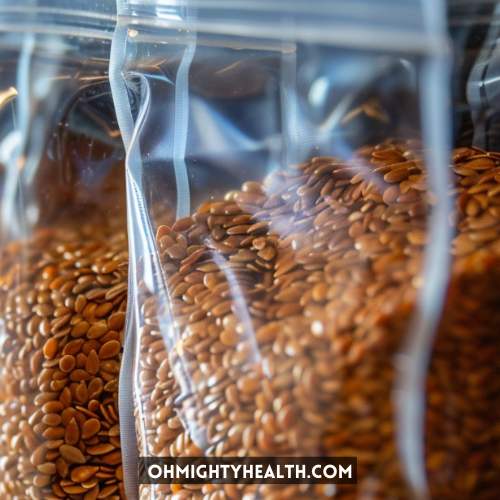
Storing flax seeds in the refrigerator or freezer can significantly extend their shelf life. This is particularly effective for ground flaxseed or if you live in a warm climate.
4. Label and date
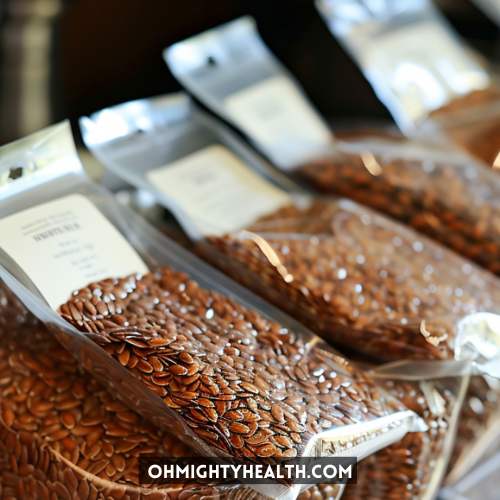
Mark containers with the date you stored the flax seeds. This helps keep track of freshness and ensures you use older stocks first.
5. Avoid heat sources
Keep flax seeds away from direct sunlight and heat sources like stoves or ovens. Heat can cause the oils in flax seeds to break down more quickly.
6. Use within recommended time frames
Even with the best storage practices, flax seeds don’t last indefinitely. Aim to use whole flax seeds within 1-2 years and ground flaxseed within a few months for the best quality.
7. Check regularly
Occasionally inspect your flax seeds for any signs of spoilage, such as a rancid smell or mould growth, especially if stored for extended periods.
By following these simple storage tips, you can protect your flax seeds from the common causes of spoilage and enjoy their health benefits to the fullest.
Pro tips for maximum freshness
1. Grind as you go
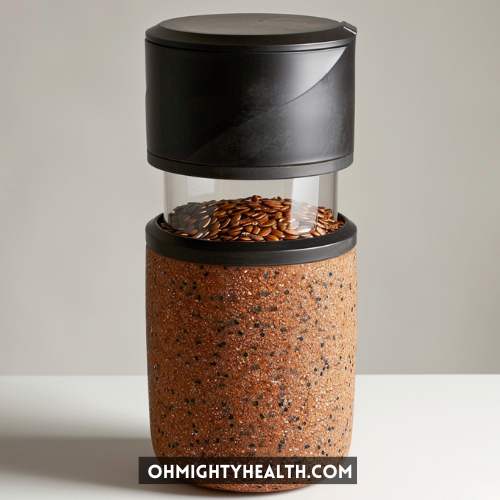
If you’re into grinding your own flax seeds, consider doing it in small batches.
Grinding flaxseed increases the surface area exposed to air, so fresh-grinding ensures you’re getting all the nutrients without the risk of eating rancid seeds.
2. Use older packages first
Keep an eye on the expiry date and use older packages first. This “first in, first out” approach ensures nothing gets forgotten in the back of your pantry or fridge!
3. Storing pro tips
For flaxseed in the pantry, choose a cool, dark cupboard away from any heat sources. As for seeds in the refrigerator or freezer, ensure they’re in the back where temperature fluctuations are minimal.
4. Check for bugs
Occasionally, bugs can find their way into pantry items. Regularly inspect your flaxseed for any signs of infestation, particularly if stored outside the fridge.
Learn to check for signs of spoilage
Before using, give your flax seeds a quick check. Signs of spoilage include a bitter flavour or an off smell.
For example, if your flax seeds smell like old paint, it’s time to part ways.
Your senses are your best allies when it comes to checking if your flax seeds have gone rancid.
1. Odour: catch the whiff!

Fresh flax seeds should have a mild, nutty smell – it’s kind of their signature.
If you catch a whiff of something that reminds you of old paint, that’s a red flag.
Rancid fats give off an unpleasant odour, and since flax seeds are loaded with nutrients and healthy fats, they’re prone to going rancid when exposed to oxygen and light for too long.
2. What do the seeds look like?
While flax seeds don’t change much in appearance, if you notice any mould (especially in a bag of flaxseed meal that’s been hanging out in the pantry too long), it’s time to say goodbye.
Keeping your seeds and grind in airtight containers or storage containers can help keep them fresh and free from fungus.
Frozen flaxseed should also look the same as the day you popped them in the freezer – if they clump together or look damp, moisture may have gotten in, and it’s best to get rid of them.
3. Taste is your final verdict
Fresh flax should taste nutty and slightly earthy.
If you’re brave enough to try a seed that’s suspect, a bitter flavour is a sure sign that it’s time to part ways.
Eating rancid flaxseed can lead to stomach upset or digestive discomfort, so it’s not worth the risk.
Simply trust your senses!
I believe your senses are key tools.
If anything about your flax seeds seems off – whether it’s the smell, look, or taste – it’s better to err on the side of caution.
The expiry date or use-by date on the package can give you a hint, but the true test is how they hold up under sensory scrutiny.
Remember, flax seeds remain fresh and retain their health benefits when stored properly, so make sure to refrigerate or freeze them, especially after you’ve opened the package.
Love flaxseed oil? Handle flax oil with care
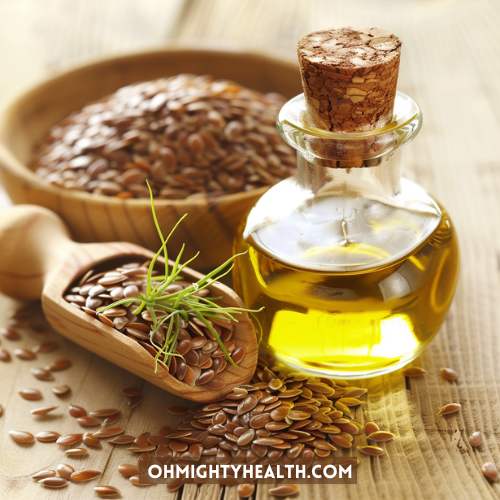
This liquid gold has a limited shelf life and should be stored in the fridge right in the refrigerator section and used within a few weeks for the best quality and health benefits.
Store flaxseed oil in the fridge (I always do!). Preferably in a dark bottle to protect it from light. Use it within a few weeks to enjoy its benefits.
Recap
And there you have it —a complete guide to keeping those precious flax seeds as fresh as the day you bought them!
From their nutritional prowess to the simple joy they bring when sprinkled over your favourite dishes, flax seeds are undeniably a staple in the health-conscious kitchen.
Now, with these tips under your belt, you can keep enjoying their benefits without the worry of them going bad.
Here’s the recap:
- Flax lasts with care: Remember, the lifespan of your flax—whether in the fridge or pantry—can be significantly extended with a bit of attention. Cooler temps, especially in the refrigerator or freezer, are flax seeds’ best friend for prolonging freshness.
- Seal the deal: Once that package is opened, transferring flax seeds to an airtight container or a resealable bag is crucial. This step alone can greatly extend the shelf life, keeping your seeds safe from moisture, air, and light—the trifecta of freshness foes.
- Freshness is key for food safety: Rancid flaxseed is not just a culinary downer but also a health hazard. Keeping an eye (and nose) on your flax seeds’ condition is part of ensuring your food safety practices are top-notch.
- Sensory checks for the win: Use your senses to guide you. If the flax seeds’ nutty aroma turns to the smell of old paint, or their pleasant taste becomes bitter, it’s time to part ways. Fresh flax should always pass the smell, look, and taste test.
- First in, first out: Managing your flax seed stock by using older packages first ensures that none of your seeds go past their prime. Regular checks and rotation are key practices in effective food storage.
- Store smart: Whether it’s flaxseed in the fridge for daily use or stashing extra bags in the freezer for long-term storage, ensuring they’re stored in the right conditions can make all the difference in maintaining their nutrient profile.
Integrating flax seeds into your diet
With this knowledge in hand, I encourage you to continue (or start) integrating flax seeds into your meals, smoothies and food in general. Here you’ll find 21 ways to eat flax seed.
They’re not just a versatile food item but a powerhouse of nutrients ready to boost your health and excellent for weight loss.
Whether you’re whipping up smoothies, baking, or just looking for that extra crunch in your salads, flax seeds are ready to serve.
Remember, the key to unlocking their superpowers indefinitely lies in how well you keep them fresh.
Stored in an airtight container, either in the fridge or freezer, your flax seeds can continue to be the nutritional champions of your diet, ready to sprinkle their goodness on your meals, day after day.
So, go ahead, let those flax seeds flourish in your pantry (or fridge), and sprinkle away with confidence, knowing you’re making the most of their incredible health benefits, bite after nutritious bite.
Leave your questions below.

